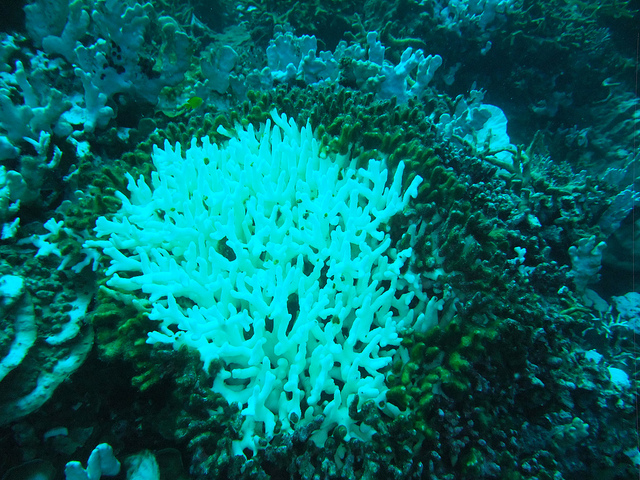Report on Harmful Algal Blooms in Lake Erie: Implications for Sustainable Development Goals
Introduction
On June 26, 2025, federal scientists released their annual forecast for harmful algal blooms (HABs) in Lake Erie, predicting a mild to moderate season. Despite this, health risks remain significant for those exposed to these blooms. The 2014 moderate bloom year, which caused toxin contamination of Toledo, Ohio’s water supply, underscores the ongoing threat. This report, based on insights from Gregory J. Dick of the University of Michigan’s Cooperative Institute for Great Lakes Research, emphasizes the critical connections between HABs and the United Nations Sustainable Development Goals (SDGs).
1. Causes of Harmful Algal Blooms
Harmful algal blooms are dense accumulations of algae, particularly cyanobacteria (blue-green algae), that occur in freshwater and marine environments. These blooms produce toxins harmful to ecosystems, water quality, and human health. Their increasing frequency and intensity are linked to several factors:
- Excess Nutrients: Primarily phosphorus and nitrogen from agricultural runoff, sewage, and detergents. Agriculture, especially industrial-scale corn production for animal feed and ethanol, is the main contemporary source.
- Climate Change: Rising temperatures accelerate cyanobacterial growth, while increased precipitation and storm events enhance nutrient runoff, exacerbating bloom severity.
This situation directly impacts SDG 6 (Clean Water and Sanitation), SDG 13 (Climate Action), and SDG 15 (Life on Land) by threatening water quality, ecosystem health, and climate resilience.
2. Advances in DNA Testing and Emerging Threats
Recent DNA sequencing of Lake Erie’s water revealed new types of microcystins and the presence of saxitoxin-producing organisms, a potent neurotoxin previously uncommon in the Great Lakes region. These findings highlight:
- The complexity and evolving nature of HAB toxins, some undetectable by traditional methods.
- The potential for increased toxin production due to warming waters, raising concerns under SDG 3 (Good Health and Well-being) and SDG 13 (Climate Action).
- The necessity for enhanced federal monitoring programs to track emerging threats and protect public health.
3. Health and Economic Impacts of Harmful Algal Blooms
HABs pose significant risks beyond environmental damage, including:
- Acute health effects such as gastrointestinal illness, headaches, fever, and skin irritation in humans.
- Fatal outcomes for pets ingesting contaminated water.
- Potential chronic health issues linked to long-term exposure, including respiratory, cardiovascular, liver, kidney, and neurological diseases.
- Economic losses exemplified by the 2014 Toledo water crisis, which cost an estimated US$65 million and disrupted community health and businesses.
These impacts underscore the importance of SDG 3 (Good Health and Well-being), SDG 8 (Decent Work and Economic Growth), and SDG 11 (Sustainable Cities and Communities).
4. Extended Duration of Bloom Seasons
Warmer water temperatures have led to earlier onset and prolonged duration of HABs. Notably, toxins were detected in Lake Erie as early as April 28, 2025, and blooms persisted unusually late into November 2022. Scientific studies indicate:
- An increase in cyanobacterial growth rates by up to 30% from 1995 to 2022.
- An extension of the bloom season by up to one month, particularly in warmer, shallow waters.
This trend aligns with SDG 13 (Climate Action), emphasizing the need to address climate change to mitigate HAB impacts.
5. Strategies for Reducing Harmful Algal Blooms
Effective reduction of HABs requires addressing nutrient pollution and climate change:
- Reducing Nutrient Runoff: Implementing improved agricultural practices and wetland restoration to decrease phosphorus and nitrogen flow into water bodies. Programs like Ohio’s H2Ohio demonstrate progress but require sustained funding.
- Climate Change Mitigation: Halting and reversing greenhouse gas emissions to reduce climate-driven factors exacerbating HABs, particularly in regions like Lake Superior.
These actions support SDG 2 (Zero Hunger) by promoting sustainable agriculture, SDG 6 (Clean Water and Sanitation), SDG 13 (Climate Action), and SDG 15 (Life on Land).
Conclusion
Harmful algal blooms in Lake Erie and other water bodies present multifaceted challenges impacting environmental health, human well-being, and economic stability. Addressing these challenges requires integrated efforts aligned with the Sustainable Development Goals, focusing on nutrient management, climate action, and robust monitoring to safeguard ecosystems and communities.
References and Further Information
- Cooperative Institute for Great Lakes Research
- Ohio H2Ohio Program
- Great Lakes Now: One world, two Great Lakes
- Great Lakes Now: Geese are a problem. What can we do?
Featured Image
Harmful algal blooms on Lake Erie result from toxic nutrient runoff from cropland, including commercial fertilizer and manure. (Photo © J. Carl Ganter/Circle of Blue)
1. Sustainable Development Goals (SDGs) Addressed or Connected
- SDG 3: Good Health and Well-being
- Concerns about health risks from harmful algal blooms (HABs), including acute and chronic health problems caused by toxins.
- SDG 6: Clean Water and Sanitation
- Issues related to water contamination from algal toxins affecting drinking water supplies (e.g., Toledo water crisis).
- Need for improved water quality and monitoring of harmful algal blooms.
- SDG 13: Climate Action
- Climate change exacerbating harmful algal blooms through warmer temperatures and increased precipitation.
- Need to reduce greenhouse gas emissions to mitigate climate-driven bloom increases.
- SDG 14: Life Below Water
- Impact of harmful algal blooms on aquatic ecosystems, food webs, and aquatic life.
- SDG 15: Life on Land
- Restoration of wetlands to reduce nutrient runoff and protect terrestrial and freshwater ecosystems.
- SDG 2: Zero Hunger
- Connection to agriculture as a source of nutrient runoff causing algal blooms, highlighting the need for sustainable agricultural practices.
2. Specific Targets Under Those SDGs Identified
- SDG 3: Good Health and Well-being
- Target 3.9: Reduce illnesses and deaths from hazardous chemicals and air, water, and soil pollution and contamination.
- SDG 6: Clean Water and Sanitation
- Target 6.3: Improve water quality by reducing pollution, minimizing release of hazardous chemicals and materials, and substantially increasing water recycling and safe reuse.
- Target 6.6: Protect and restore water-related ecosystems, including wetlands.
- SDG 13: Climate Action
- Target 13.2: Integrate climate change measures into national policies, strategies, and planning.
- Target 13.3: Improve education, awareness-raising and human and institutional capacity on climate change mitigation, adaptation, impact reduction, and early warning.
- SDG 14: Life Below Water
- Target 14.1: Reduce marine pollution of all kinds, particularly from land-based activities, including nutrient pollution.
- SDG 15: Life on Land
- Target 15.1: Ensure the conservation, restoration and sustainable use of terrestrial and inland freshwater ecosystems and their services.
- SDG 2: Zero Hunger
- Target 2.4: Ensure sustainable food production systems and implement resilient agricultural practices that increase productivity and production.
3. Indicators Mentioned or Implied to Measure Progress
- Water Quality Indicators
- Frequency, duration, and intensity of harmful algal blooms in freshwater bodies (e.g., Lake Erie bloom season length and toxin detection dates).
- Concentration levels of algal toxins such as microcystins and saxitoxins in water supplies.
- Incidence of water contamination events affecting drinking water safety (e.g., Toledo’s 2014 water crisis).
- Health Indicators
- Incidence rates of acute and chronic health problems linked to exposure to algal toxins (gastrointestinal, respiratory, neurological issues).
- Reports of animal (e.g., pets) fatalities due to toxin exposure.
- Environmental and Ecological Indicators
- Extent of nutrient runoff from agricultural sources (phosphorus and nitrogen levels in water bodies).
- Changes in aquatic ecosystem health and food web structure.
- Wetland restoration area and effectiveness in reducing nutrient runoff.
- Climate-related Indicators
- Water temperature trends and precipitation patterns affecting bloom growth rates and season length.
- Greenhouse gas emission levels related to climate change mitigation efforts.
- Policy and Program Indicators
- Implementation and effectiveness of nutrient reduction programs such as Ohio’s H2Ohio.
- Federal monitoring programs tracking harmful algal bloom toxins and emerging threats.
4. Table of SDGs, Targets, and Indicators
| SDGs | Targets | Indicators |
|---|---|---|
| SDG 3: Good Health and Well-being | 3.9: Reduce illnesses and deaths from hazardous chemicals and pollution |
|
| SDG 6: Clean Water and Sanitation |
|
|
| SDG 13: Climate Action |
|
|
| SDG 14: Life Below Water | 14.1: Reduce marine pollution, including nutrient pollution |
|
| SDG 15: Life on Land | 15.1: Conserve and restore terrestrial and freshwater ecosystems |
|
| SDG 2: Zero Hunger | 2.4: Ensure sustainable food production and resilient agriculture |
|
Source: greatlakesnow.org







